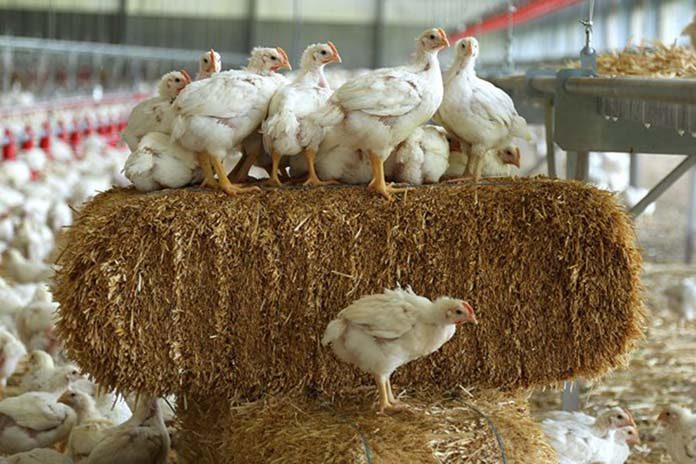
One benefit of low protein (LP) diets is improving gut health in a future of antibiotic-growth promoter free diets.
Drew et al., (2004) found an interaction between dietary crude protein (CP) and proliferation of Clostridium perfringens, a pathogenic bacterium identified to cause clinical and sub-clinical necrotic enteritis (NE), which costs the poultry industry US$6 billion dollars annually (Wade and Keyburn, 2015). Keerqin et al., (2017) observed improvements in body weight with excess digestible amino acids (AAs) from intact protein in birds challenged with sub-clinical NE. The current study aimed to investigate the effects of CP increasing dietary AAs on the performance of birds challenged with sub-clinical NE. Day-old male Ross 308 breeders (n=648) were fed a common starter diet ad libitum from d 0 – 7 followed by grower treatment diets until d 21.
All diets were wheat based with sorghum, soybean meal and canola oil; essential amino acids were supplemented when limiting according to AMINOChick®2.0 AA recommendations; glycine was supplemented to 15 g/kg glycine + serine. A 2 x 2 x 2 factorial arrangement was used to determine the effects of NE challenge, standard (SP) and LP diets, and 100 and 115% dietary AAs. Four isonitrogenous and isocaloric dietary treatments were used, including a SP diet at 216 g/kg CP and a LP diet at 171 g/kg CP with AAs at 100 and 115%. On d 7 all birds were allocated to pens of equal weight with 14 and 13 birds per pen in the challenged and unchallenged pens respectively.
Challenge birds received 1ml per os of Eimeria spp. at d 9; followed by viable growth of (approx. 108 CFU/mL) C. perfringens EHENE18 per os 1 mL/bird consecutively at d 14 and 15 to induce sub-clinical NE. Unchallenged birds received sham treatments of PBS and sterile broth at d 9 and d 14 and 15 respectively. Weekly pen and feeder weights were recorded and on d 16 two birds per pen were euthanized to determine jejunal lesion score. Data underwent statistical analysis (Minitab® 17.1.0) using a stepwise general linear model ANOVA with statistical significance determined using Tukeypost-hoc test. Lesion scoring data were distributed non-normally, therefore were analysed using Kruskal-Wallis nonparametric test to test for significance. Challenged birds had significantly (P<0.001) lower body weight gain (627 vs 881 g), feed intake (956 vs 1121 g) and higher feed conversion (1.530 vs 1.277). The challenge was further confirmed by the presence of jejunal lesions (P<0.001) in challenged birds. Reduction of CP significantly lowered body weight gain (984 vs 813 g) in the unchallenged group. However, no significant difference occurred within the challenged group between SP and LP treatments (640 vs 614 g). The supplementation of excess AA showed no significant difference in performance (P>0.05) at this stage of growth within CP or challenge groups. Reducing CP to 171 g/kg from 216 g/kg or supplementing 115% AAs did not suppress the effects of sub-clinical NE in broilers as of d 21.
Acknowledgements: Thank to Evonik (SEA) Pte. Ltd and AgriFutures for their financial and academic support throughout this study.
References
Drew M, Syed N, Goldade B, Laarveld B & van Kessel A (2004) Poult. Sci. 83: 414-420.
Keerqin C, Wu S, Svihus B, Swick R, Morgan N & Choct M (2017) Anim. Nutr. 3: 25-32.
Wade B & Keyburn A (2015) World Poult. 31: 16-17.
From the 2019 Australian Poultry Science Symposium.

















